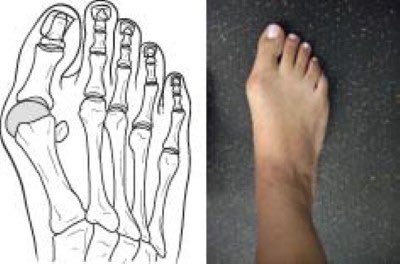A thread on toe-out vs toe-in gait patterns
We see this all the time. Just walk down a street (well, once this epidemic is over) to see just how common this is.
A toe-out pattern can be of particular concern because it allows for a premature medial displacement of..
(1/7)
We see this all the time. Just walk down a street (well, once this epidemic is over) to see just how common this is.
A toe-out pattern can be of particular concern because it allows for a premature medial displacement of..
(1/7)
the normal progression of vertical forces.
This supplies body weight with an effective lever arm for maintaining the foot in a pronated position throughout mid-stance and propulsion, but it may eventually result in a loss of the foot arch. This is not inherently a bad..
(2/7)
This supplies body weight with an effective lever arm for maintaining the foot in a pronated position throughout mid-stance and propulsion, but it may eventually result in a loss of the foot arch. This is not inherently a bad..
(2/7)
thing, but can predispose this person to injury because it shortens the peroneals and impinges the talus on the ankle.
This is when they can feel “tight” on the front of their ankles.
Additionally, this can cause big toe damage as they “roll off” the medial forefoot..
(3/7)
This is when they can feel “tight” on the front of their ankles.
Additionally, this can cause big toe damage as they “roll off” the medial forefoot..
(3/7)
which forces the big toe into an inverted position. This can cause “bunions” (Nix et. al, 2013).
It has been claimed that a toe-in gait pattern is not quite as risky because it just forces the individual to maintain a lower gear push-off which could slightly https://abs.twimg.com/emoji/v2/... draggable="false" alt="⬆️" title="Upwards arrow" aria-label="Emoji: Upwards arrow"> risk of..
https://abs.twimg.com/emoji/v2/... draggable="false" alt="⬆️" title="Upwards arrow" aria-label="Emoji: Upwards arrow"> risk of..
(4/7)
It has been claimed that a toe-in gait pattern is not quite as risky because it just forces the individual to maintain a lower gear push-off which could slightly
(4/7)
inversion ankle sprains or more lateral toe stress.
In my opinion, the pelvis can be a significant contributor to this. If the femur is in retroversion (femur is externally rotated), the pelvis/femur is in a “swing phase” of gait which can bias the foot towards this.
(5/7)
In my opinion, the pelvis can be a significant contributor to this. If the femur is in retroversion (femur is externally rotated), the pelvis/femur is in a “swing phase” of gait which can bias the foot towards this.
(5/7)
It’s important to remember that individuals self-organize into the gait pattern that is most efficient for them as an individual given their morphology and available range of motion (Cavanaugh & Williams, 1982).
As I’ve said before, if there is no pain or dysfunction..
(6/7)
As I’ve said before, if there is no pain or dysfunction..
(6/7)
present, we should be hesitant to change a gait pattern just for the sake of changing it.
We should intervene if we have to, not because we want to.
Many individuals have gait patterns considered “abnormal” but are still fast runners or sprinters.
(7/7)
We should intervene if we have to, not because we want to.
Many individuals have gait patterns considered “abnormal” but are still fast runners or sprinters.
(7/7)

 Read on Twitter
Read on Twitter

 risk of..(4/7)" title="which forces the big toe into an inverted position. This can cause “bunions” (Nix et. al, 2013).It has been claimed that a toe-in gait pattern is not quite as risky because it just forces the individual to maintain a lower gear push-off which could slightly https://abs.twimg.com/emoji/v2/... draggable="false" alt="⬆️" title="Upwards arrow" aria-label="Emoji: Upwards arrow"> risk of..(4/7)" class="img-responsive" style="max-width:100%;"/>
risk of..(4/7)" title="which forces the big toe into an inverted position. This can cause “bunions” (Nix et. al, 2013).It has been claimed that a toe-in gait pattern is not quite as risky because it just forces the individual to maintain a lower gear push-off which could slightly https://abs.twimg.com/emoji/v2/... draggable="false" alt="⬆️" title="Upwards arrow" aria-label="Emoji: Upwards arrow"> risk of..(4/7)" class="img-responsive" style="max-width:100%;"/>



